Transforming environments
This entry explores changes made by settlers to Aotearoa's natural environment, their naming of places and features, and efforts to conserve and restore its natural beauty.
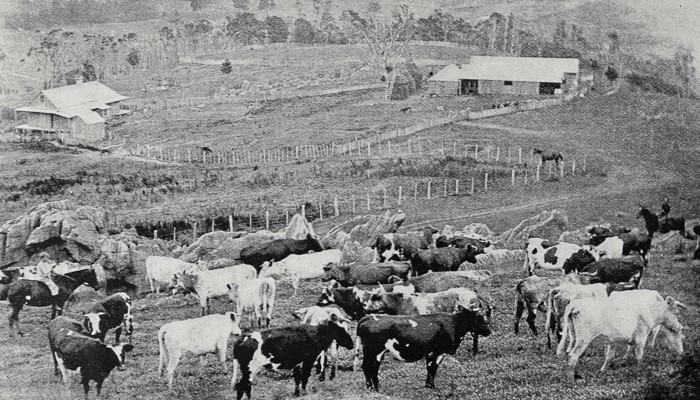
Image: Dairy farming in Northern Auckland, a Waikiekie homestead by [unknown]. Collection: Auckland Libraries Heritage Collections AWNS-19010322-08-02.
Keywords
Here is a list of some keywords based on the changing landscape and environment of Tāmaki Makaurau. Use this list when searching the collections and websites in this entry.
Bridges: Bridges are an important part of the transport of goods and people. The Auckland Harbour Bridge and Grafton Bridge are well-known bridges in Tāmaki Makaurau.
Clearing land: From the 1840s forests were burnt or cut down to clear land for farming, agriculture, industry, and building roads, railways and townships.
Conservation: Parks, reserves and marine protected areas are some ways in which government agencies such as the Department of Conservation (DOC) protect and conserve New Zealand's natural and historic heritage.
Dairy farming: This was a new source of wealth for many settlers. Meat and dairy products were processed in local factories and exported from the port of Auckland.
Extractive industries: These industries involve removing raw material such as metals and minerals from the earth. This includes the logging industry.
Early industries: Some early industries were sawmills, brewing, flour mills, clothing and boat-building. Later this grew to include tanneries, freezing works, brickworks, potteries, railway workshops and the manufacture of machinery.
Kauri: Found in abundance in the Waitākere Ranges. Kauri forests were almost destroyed when they were logged for building ships and houses, and for export overseas.
Manukau Harbour claim: In the 1980s the Waitangi Tribunal made a claim on behalf of the iwi of the Manukau Harbour. The claim was about the pollution of seafood resources and loss of land after the New Zealand Wars.
Naming Auckland: New Zealand's first governor William Hobson renamed Auckland after Lord Auckland. Tāmaki Makaurau is the Māori name for Auckland.
Port of Auckland: Built on reclaimed land in the Waitematā Harbour, the port is an important centre for shipping and trade for Aotearoa.
Resources Management Act 1991: The act made allowances for Māori environmental concerns about the Manukau Harbour, and established local iwi as consulting kaitiaki (guardians) of the harbour.
Viticulture (growing grapes for wine): Around the late 19th century Dalmatian immigrants planted vineyards in West and North Auckland.
Tips: Before searching it can be useful to come up with a list of words to use. These are sometimes called keywords or search words. They can be the name of a person, place, or event you are researching. Sometimes there are different names or spellings for words. Or they could have changed over time. You can leave out small words like ‘the’ and ‘of’ and just choose the main ones, eg 'timber industry'. We can always change our keywords or add more if we need to.
Auckland resources
Here are some collections from Auckland Libraries and other reliable Auckland based museums and heritage websites. They will help you find books and information on the changes made to Auckland's landscape by the early settlers, the naming and renaming of places and efforts of conservation.
Auckland Libraries Catalogue
This catalogue from Auckland Libraries will help find books about Aotearoa New Zealand and Auckland's histories.
Search the catalogue using keywords like 'Manukau claim' or 'factories'.
You can get fewer results by using the filters under Refine by.
Select the book that interests you.
Go down the page to Edition information to check if the book can be borrowed or if it's for In library use only.
Look down the page to Related Resources to find other titles related to this search.
If you have an Auckland Libraries card, you can also request the item be sent to your local library.
Tips: If the status of the book is 'In library use only', it means the book can only be used in the library and can't be taken home. In this case you will need to fill out a form or speak to a librarian about reading the book in the library.
Tips: You will find lots of books that have been written over 50 years ago. While they are good sources of information, we need to remember the context and time from when they were written.
Kura — Photographs
Browse photographs, illustrations and works of art from the 1800s to today.
Try keywords like 'market gardens' or 'Auckland railways'.
Select Chinese market gardens, Great North Road, Western Springs and Auckland Railway yards, Beach Road, 1904 to see how these places looked in the past.
Use the word 'conservation' to find historic images of Arbor Day in the Civic Reserve, Highbury, Birkenhead and Rangitoto Recreation Grounds.
You can also use the filters in the column on the right to view by Decade or Collection Name.
Tips: Always remember to check the copyright or usage rights of images. This will tell you if you need permission to use the image, and how to attribute the image.
Heritage et AL
These blogs have been written by Auckland Libraries staff and focus on the history of Tāmaki Makaurau. The blogs include photos and images from the Auckland Libraries heritage collections.
Enter the words 'logging' into the search box at the top of the page.
Read Kauri logging in the Waitākere Ranges and The price of progress.
The stories describe the impact of the extractive timber industry on Auckland's forest areas.
A search for 'industry' will lead to the blog Stepping back into the shed: Westfield freezing works, 1916-1989.
The story has images and interviews with people who worked in the meatworks industry in Auckland.
Tips: Blogs can be good for looking at how things have continued or changed over time. Remember, stories can be told in different ways so it’s helpful to look at multiple information sources to find different perspectives.
Auckland Libraries - YouTube
The Auckland Libraries YouTube channel has many videos about Auckland’s heritage, recordings of library events, conversations with authors, talks, stories, activities, music and more. Some of the talks are delivered by historians on their specialist subjects.
Select Videos to see videos sorted by date, or use Playlists to see them grouped by theme.
Or, use the search bar for the channel to enter the words 'Auckland harbour'.
The video is about early industry, settlements and conservation efforts on Ragitoto Island.
Try the keywords 'industry' to find J. T. Diamond — Documenting the West.
This video covers the changes, the pottery industry and naming of places in West Auckland.
Tips: You will find a huge selection of videos on YouTube. We recommend you view videos from reliable sources like National Geographic, History Channel, BBC etc. These are official channels from organisations.
Ngā Pātaka Kōrero - Auckland Libraries
This is the SoundCloud page for the Auckland Libraries podcast. You can listen to author talks, events, and commentary from the curatorial teams on Auckland's treasured collections.
Go to Playlists to browse for Heritage Talks such as Whau Heritage Stories and Pakuranga the Early Years.
Both collections look at the early years of development and the naming of places in these areas.
Or, use the search box at the top of the page to enter a suburb like 'Maungakiekie' to find Auckland History Intiative - Meanings of Maungakiekie.
Listen to research done on the Maungakiekie | One Tree Hill and Cornwall Park area.
Kura — Oral History
This part of Kura has oral history interviews, collection series, and recorded talks and events.
Look down the list of results for the video Angela Black, talk on the Chelsea Sugar Refinery, 2022 and History of Westhaven video, 2018.
Or, use the filters on the left of the page to select by Collection, Decade, Language or Type.
Not all of the oral histories are available online, so fill up the form that comes with the oral history item you want to listen to or watch, then select Submit form. The library will get in touch with you when they have the item ready for you to use.
Tips: Primary sources like oral histories are useful for hearing first-hand accounts, and gathering information about people’s values, attitudes and experiences about a topic or event from that time. Keep in mind that they may not fairly show a wide range of views or experiences.
Tāmaki Paenga Hira | Auckland War Memorial Museum
This is one of New Zealand's significant heritage libraries. It has pictorial and art, Māori and Pacific, natural, social, and history collections. It is a great place to visit and check out exhibitions and galleries about topics involving Aotearoa New Zealand's histories.
Go to the tab Discover then select Stories to read about Auckland and its people.
Or, enter the search terms 'industries' or 'conservation'.
From the page of results select Web, then Stories.
Read Save Our Trees about the impact of the logging industry on kauri forests.
Then read Maria Island, conservation history on Auckland’s doorstep about the beginnings of a predator-free New Zealand dream that began in the Hauraki Gulf.
MOTAT (Museum and Transport and Technology)
Based in Auckland, this is New Zealand’s largest transport and technology museum. Visitors can explore and discover the achievements that have helped shape New Zealand’s history.
Go to the tab called Collections & Stories, then select Stories.
Look down the page for Oh Dam! Dam Technology in New Zealand Part 1.
The story is about building dams for early industries such as farming, mining and forestry and the impact this had on the land and forests in the Coromandel and Waitakere Ranges.
Tips: Some websites have .au, .nz, .uk or other codes in their url. This can tell you which country this website comes from eg .au is from Australia or .nz is from New Zealand. You can check the ‘About Us’ link on the website for more information.
AHI Auckland History Initiative
The Auckland History Initiative from the University of Auckland supports and promotes the physical and cultural histories of Tāmaki Makaurau. The stories are written by student scholars.
Search for 'One Tree Hill'.
Read Isabella Wensley's study called “Mere Cold Stone” The Different Meanings of the One Tree Hill Obelisk.
Isabella's research project is about the different meanings, uses and changes to Auckland's iconic Maungakiekie.
Tips: These stories are reliable and trustworthy because the project is run by the University of Auckland where student researchers have the opportunity to work with leading researchers at the University of Auckland, including galleries, libraries, archives and museums.
Remuera Heritage
Remuera Heritage was established in 2007 to recognise, protect, and preserve Remuera's natural and cultural heritage.
Go Stories at the top of the page, then select Remuera Story.
This is a walk through the history of Remuera from Māori Remuera, the coming of the early settlers, the sale of land, and images of changes to Remuera from 1927 to 2016.
Tips: Local heritage sites are a great way of learning about the local history and culture of a particular area as they have stories that connect the past with the present.
General New Zealand resources
The websites below belong to government agencies, national museums, archives, libraries, and other reliable sources. They will help you find articles, video and audio about how landscapes were transformed by the early settlers, the impacts, and the efforts to conserve and restore our natural environments and historic sites.
Te Ara: The Encyclopedia of New Zealand
Te Ara is an excellent starting point for all questions about Aotearoa New Zealand. If we look down to the bottom of the page, we can see that the website belongs to the Ministry for Culture & Heritage, so the information is well-researched and reliable.
Go to Stories A-Z and then Auckland region to read how farming, timber towns and city building changed Tāmaki Makaurau.
Next, go to the Sitemap and look for the section on Settled Landscapes.
Find the story called Changing the Landscapes.
These stories cover the impacts of agriculture, irrigation, farming and introduced plants and animals on the environment.
Then, from the Sitemap, look under the section called The Bush to find Conservation.
Read about the steps taken by the government and Māori to protect our natural flora, fauna, and environment.
NZ History
NZ History is another great website for information about Aotearoa New Zealand. If we go all the way down the page we can see that the website belongs to the Ministry for Culture & Heritage, so the information is well-researched and reliable.
Go to the section on Culture and Society, then look under The great outdoors to find Scenery preservation 1903-1953.
This story is about the rise of scenery preservation societies and the introduction of the Scenery Preservation Act 1903.
Tips: We like sites like this because they’re reliable. You can tell because of their web address – they have either .govt or .ac, meaning they are from government or educational organisations. They’re also New Zealand sites, so relevant for us.
Ngā Taonga Sound & Vision
Funded by the Ministry for Culture and Heritage, Ngā Taonga Sound & Vision is New Zealand’s audio-visual archive. Their collection includes film and television, radio and sound recordings, props, posters and more from over 120 years of New Zealand’s history. Over 7,500 items can be viewed or listened to online.
Use the search words 'Auckland conservation' and 'Auckland industries'.
Make sure to select View or listen online now after each search as not all items can be viewed or listened to online.
Listen to Spectrum 111. The Urbane Shore. This is about the impact of man on the environment around Takapuna.
Watch Industrial New Zealand - Third of the Series: Penrose. The story charts the impact of factories, roads and railways on the suburb of Penrose.
Tips: Websites that have .org or .net in the address can have good information, but you need to assess how reliable it is. Check the About us link on the website, if you can find one. That can tell you what the organisation’s mission and values are.
Heritage New Zealand | Pouhere Taonga
This government organisation identifies and protects Aotearoa’s historic and cultural heritage. The website has images and information about important heritage places and landmarks.
Go to the tab called Places, then select New Zealand Heritage List.
Under Explore The List go to Region to select Auckland Council.
Next, select Show listings to see historic buildings, monuments and areas in Auckland.
View Auckland Timber Company Building (Former). The note explains the growth of the timber industry and the changes it made to the rural landscape of Northern New Zealand.
The Panmure Bridge Swing Span and Abutment has a note about the expansion of roads and transport in colonial Auckland.
Department of Conservation (DOC)
The Department of Conservation (DOC) is the government website about preserving the natural and historical places of New Zealand.
Go to Our work to read about the various recovery and protection programmes, pest control measures and projects to manage and sustain our natural and heritage resources.
Look at About us to read about their role, policies, plans and history of legislation.
Ministry for the Environment
This government agency advises the New Zealand government on environmental issues and making decisions about the county's natural and physical resources.
Visit the About us page to read about their role and purpose.
Also visit Te Ao Māori to understand the role of Māori to help create environments for future generations.
Tips: The Department of Conservation and the Ministry for the Environment are useful and reliable websites that have lots of information on efforts, laws and policies made over the years to sustain, manage and protect Aotearoa New Zealands's natural and historic heritage.
Books
You can also visit your local public library for books on Auckland and Aotearoa New Zealand histories. Listed below are a few titles to help you with your search for books on this topic:
Finding of the Waitangi Tribunal on the Manukau Claim by New Zealand. Waitangi Tribunal, E. T. J Durie, Paul Temm, Graham Latimer, Nganeko Kaihau Minhinnick, and Puaha ki Manuka
Shifting grounds: deep histories of Tāmaki Makaurau Auckland by Lucy Mackintosh
The timber industry in 19th century West Auckland by Louise Shen, J.T. Diamond Essay Competition (2006), West Auckland Historical Society, Waitakere Library and Information Services
Waitakere kauri: a pictorial history of the Kauri timber industry in the Waitakere Ranges, west Auckland by John T. Diamond and Bruce W. Hayward
Making Peoples: A History of the New Zealanders from Polynesian settlement to the end of the nineteenth century by James Belich
SCIS no: 5496716
More about Auckland
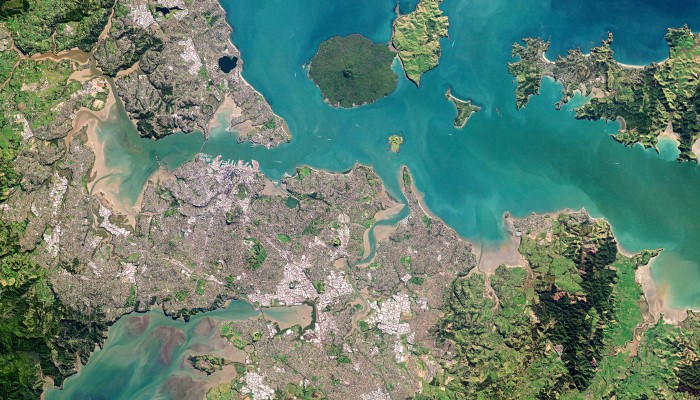
Local iwi
There are many iwi with ancestral relationships to Tāmaki Makaurau. This page lists iwi and websites which have information about their histories.
Learn about local iwi
Changing views on conflict
This entry recommends resources to find out how New Zealand's involvement and views of conflict have changed over time, and how wars are commemorated. It also looks at New Zealand's work with the United Nations and current ideas of national identity.
Learn about changing views on conflict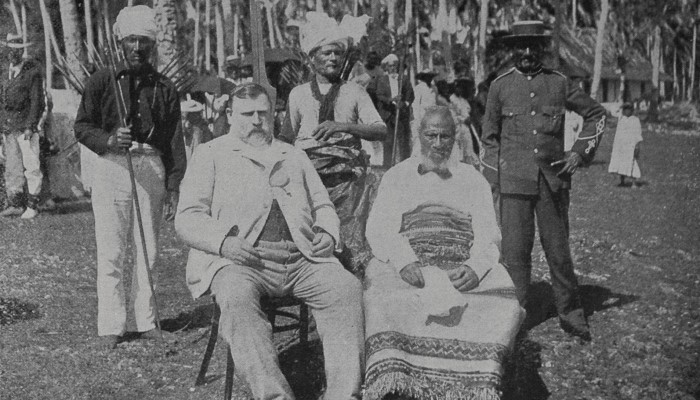
Colonial power in the Pacific
This entry has collections and websites to help explore the history of New Zealand's presence and colonial power in the Pacific. It has examples of the rise of independent Pacific nations and how they sustained their culture and presence in the Pacific.
Learn about colonial power in the Pacific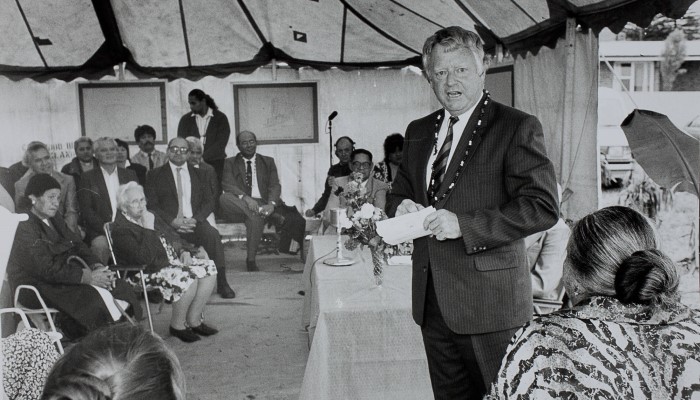
Decolonising the Pacific
This entry will help you find the best websites and collections to explore the decolonisation of the Pacific, including Aotearoa New Zealand's continued interests in the region.
Learn about decolonising the Pacific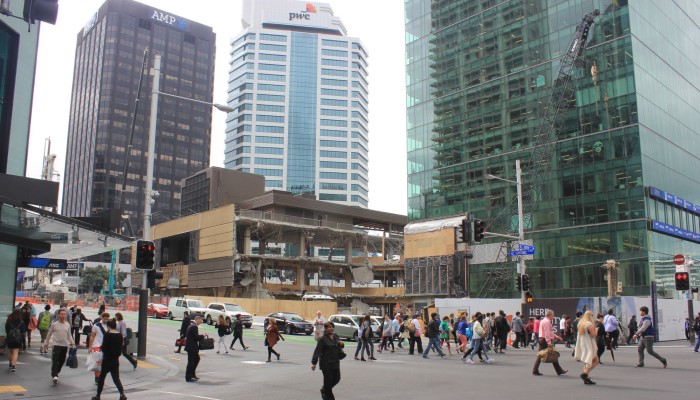
Economic independence and vulnerability
This entry will help you find information about the history behind Auckland's economic progress and independence, and the factors that impacted it.
Learn about economic independence and vulnerability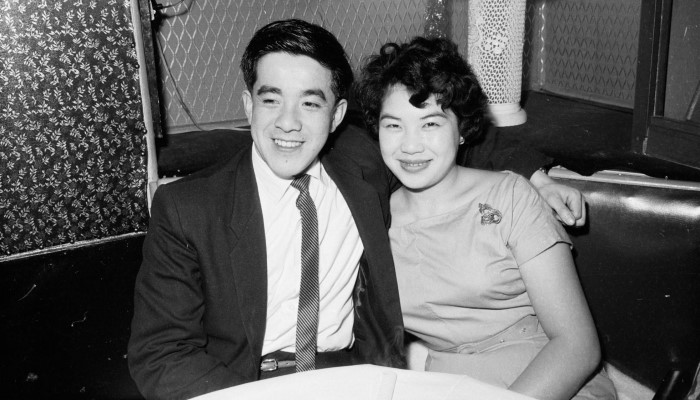
Finding a place in Aotearoa New Zealand
Since the 1700s, new people have immigrated to Aotearoa. Some came in search of a better way of life or because their country was no longer safe. Newcomers could experience racism and discrimination. They also helped shape New Zealand as a country.
Learn about finding a place in Aotearoa New Zealand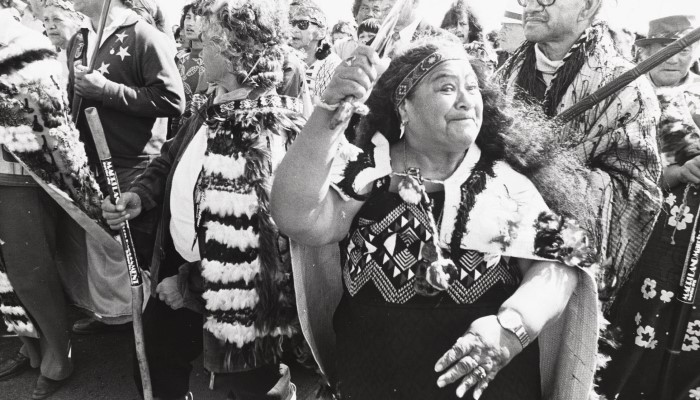
Mana in Māori society
This entry has websites to help you understand the different meanings of mana and its importance in political, social and traditional relationships in Māori society.
Learn about mana in Māori society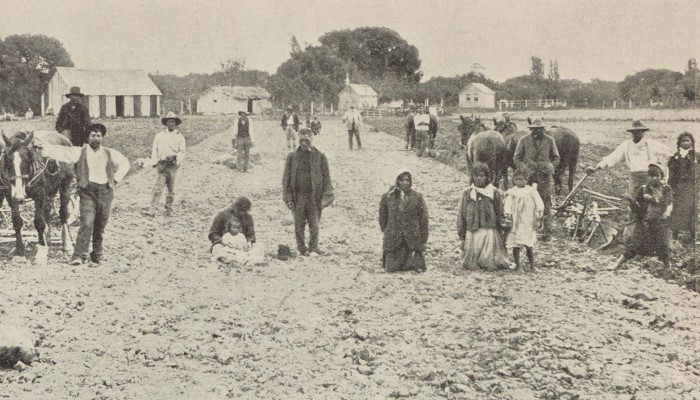
Māori economy: opportunities and challenges
This entry will help you find the best websites and databases that explore the history and development of the Māori economy including the challenges Māori faced from the New Zealand Wars, land sales and decisions made by the Native Land Court.
Learn about māori economy: opportunities and challenges
Peopling the colony: inclusion and exclusion
This entry recommends places to find information about the history of immigration to Tāmaki Makaurau and New Zealand. This includes immigration laws and changes, the role of Māori in immigration, and the government's attempt to set right past injustices.
Learn about peopling the colony: inclusion and exclusion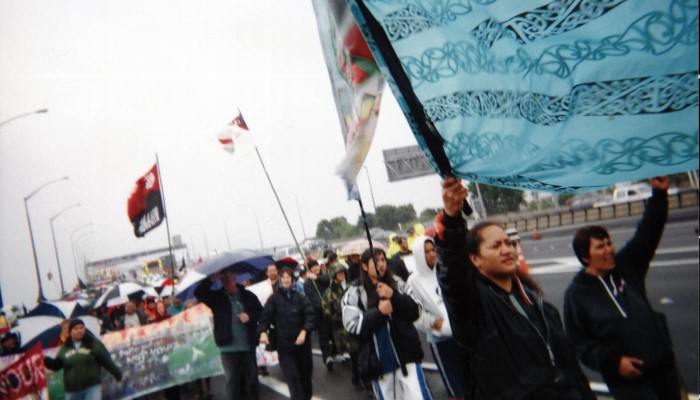
Sovereignty vs rangatiratanga: wars, laws and policies
This entry recommends websites where you can find information about the impacts of land laws on Māori, the New Zealand Wars, and attempts by Māori to find justice and build a relationship with the Crown.
Learn about sovereignty vs rangatiratanga: wars, laws and policies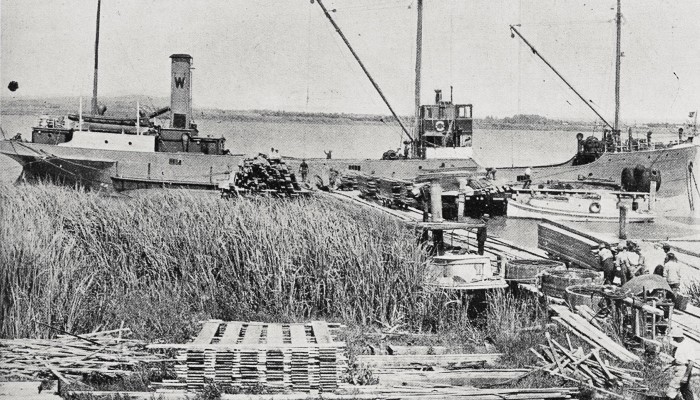
Technology and economic development
This entry will help you understand how advances in technology and land acquisition developed Auckland's economy but greatly impacted Māori and their economy.
Learn about technology and economic development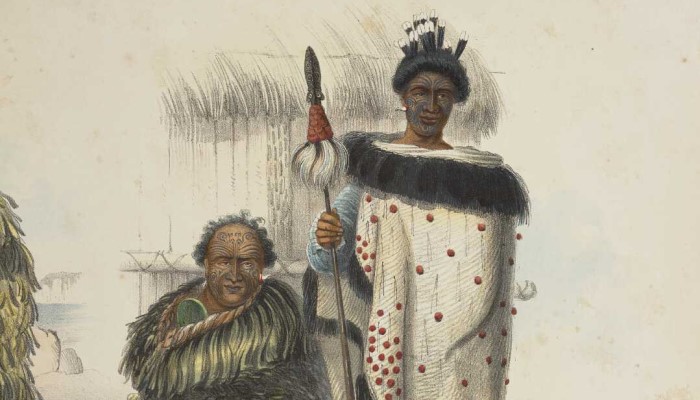
Te Tiriti o Waitangi
This entry recommends websites and collections to find information about He Whakaputanga o te Rangatiratanga o Nu Tireni | The Declaration of Independence and the Treaty of Waitangi | Te Tiriti o Waitangi, their significance, and the signatories.
Learn about te Tiriti o Waitangi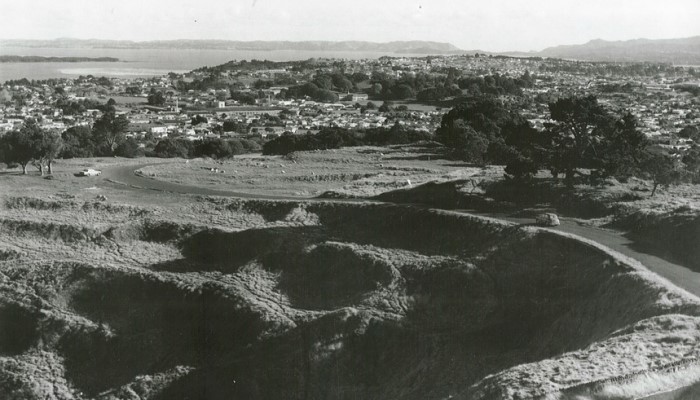
Transforming te taiao
This entry will help you find information on the changes made to the environment by pre-European Māori, and their care and connections to te taiao (the natural world).
Learn about transforming te taiao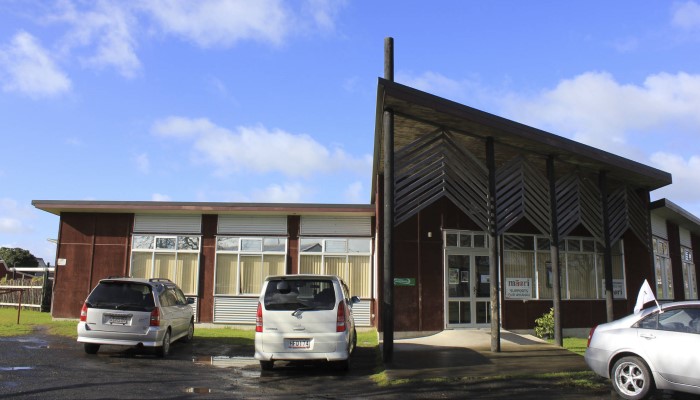
Urbanisation and being Māori
This entry will help you find information about Māori migration to cities, their challenges, and what this meant for their identity as Māori. You will also find information about some protests Māori were involved in to challenge political and social ideas.
Learn about urbanisation and being Māori